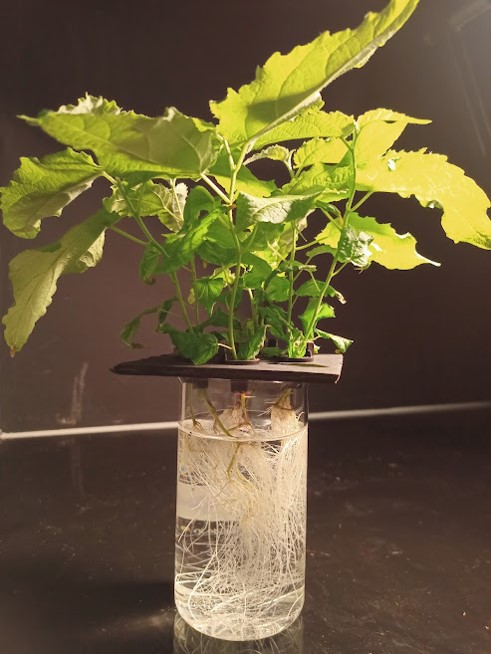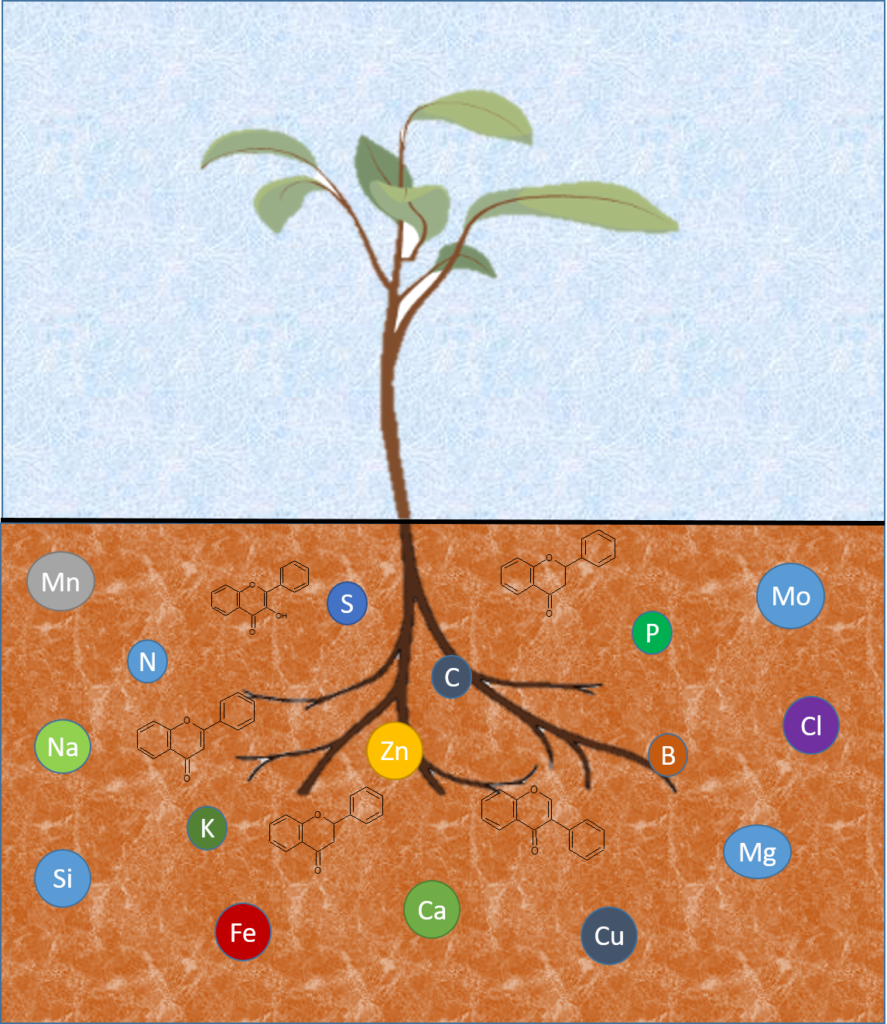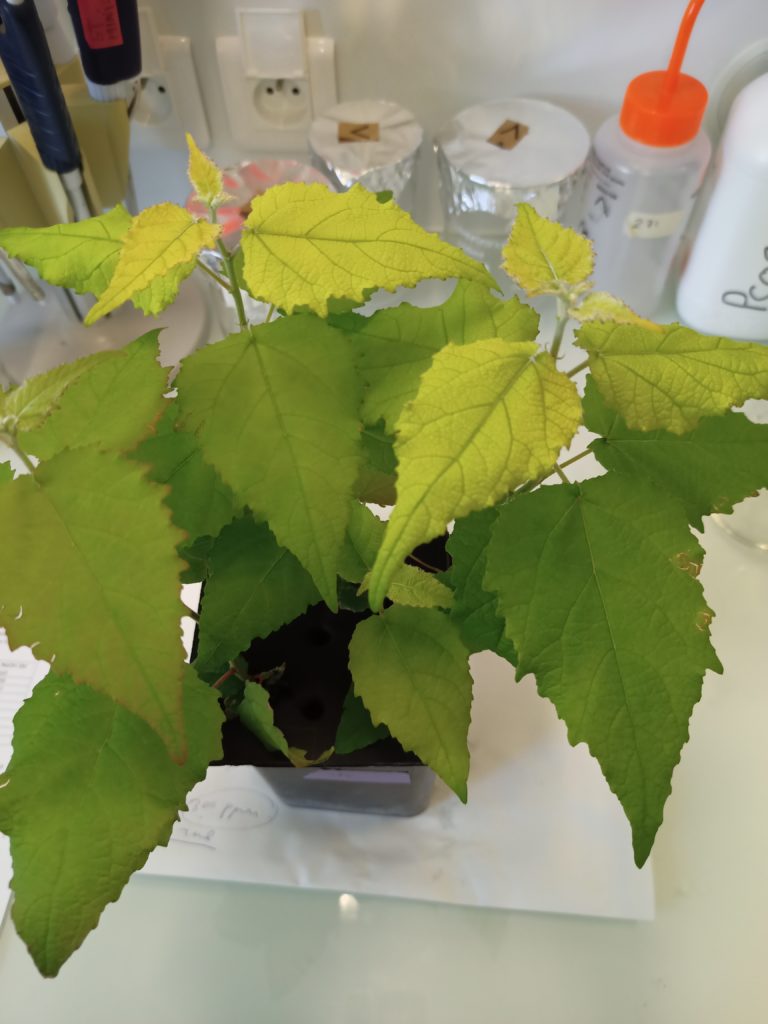How do the Poplar roots and root exudates profiles change under nutrient deficiencies?

Plant Nutrition, Health, and Sustainable Agriculture
According to the United Nations report, the world’s population will increase by 2 billion persons in 2050 and so, the challenge for the next thirty years is to double the current rate of food production. In the context of global changes, it is essential to maintain the productivity of agroecosystems to mitigate the increase in atmospheric CO2 concentrations since photosynthesis is the main entry point for carbon (C) in ecosystems and it is often limited by the availability of minerals nutrients. Therefore, plant mineral nutrition is a key issue for atmospheric CO2 fixation. On the other hand, the arable land availability decreases due to climate change, and the nutrient’s availability is one of the most serious limitations to crop yields. Unfortunately, nutrient deficiency in food crops often translates into a nutrient deficiency in humans, and according to the World Health Organization, zinc (Zn) deficiency and iron (Fe) deficiency anemia affects around two billion people globally. Moreover, the targets of the 2nd and 15th UN sustainable development goals, Zero Hunger and Life on Land, encourage us to implement agricultural practices that increase productivity and production, help to maintain ecosystems, strengthen capacity for adaptation to climate change, and progressively, improve land and soil quality.
The European Comission has also implemented the European Green Deal that will improve the well-being and health of their citizens and future generations.
ExuNutriStress aims to contribute to Sustainable Agroforestry deeping on the effects of the combined nutritional deficiencies (N and Fe) In Poplar trees, in special in roots and roots exudates.
Why Poplar Trees?
Poplar trees have important values above and beyond wood or fiber production. They have been planted for centuries and there are reports dating back to early Chinese history and biblical times in the Middle East. Moreover, poplars are often planted for wind and snow protection of farmsteads and animals as well as to decrease soil and wind erosion.
Poplar, a model perennial plant, can be characterized as fast-growing, moisture-loving, and shade-intolerant medium to large trees with a short-life span. Poplar belong to the Salicaceae family, the genus Populus, that comprises 22 to 85 species of deciduous plants native to the Northern Hemisphere. Common names used for the different species include poplar, aspen and cottonwood. Black cottonwood (P. trichocarpa), Eastern cottonwood (P. deltoides) and quaking aspen (P. tremuloides) are natives to North America while European aspen (P. tremula), white poplar (P. alba) and the hybrid P. x canensces (=P. tremula x P. alba) are native to Europe.
The importance of cultivating poplar at a global scale is reflected by the abundance of information gathered over the last decade by the International Poplar Commission (statutory body within the FAO), which has specifically covered the subject in one of its working groups.
Why Roots Exudates?

In nature, plants release all the time many different chemical compounds in their surrounding environment, the rhizosphere. This secretion process is known as exudation, and it can be carried out by different organs, including leaves, shoots, or roots, which can secrete substances in solid, liquid, or gaseous forms to their surrounding environment. Plants growing in low-nutrient environments also employ root exudates in ways other than as symbiotic signals to soil microbes involved in nutrient procurement.
ExuNutriStress deeps on root exudates which is a mix of a wide variety of compounds, including primary metabolites as sugars, amino acids or organic acids and, specialized metabolites as flavonoids, alkaloids or terpenoids .
Both types of metabolites have multiple effects in soil: (i) to promote soil aggregation, (ii) to facilitate mineral nutrients absorption (iii) to generate inter and intra-plant signal exchange (iv) to feed the soil microbiome (v) to release of plant defense compounds (vi) to promote plant-microbial signal exchange
Why Nitrogen and Iron deficiency?

In the face of global changes, agroecosystem productivity is essential both for CO2 fixation and feeding the increasing population. However, plant growth is frequently limited by nutrient availability, and in the environment, plants are more often exposed to multiple than single nutrient deficiencies.
Nitrogen is a fundamental macronutrient that takes part in proteins, amino acids, chlorophyll, nucleic acids, nucleotides, and nucleosides. Nitrogen pollution level expected by 2050 is projected to be 150% higher than in 2010, with the agricultural sector accounting for 60% of this increase. So, it is therefore urgent to reduce this pollution by finding strategies to increase nitrogen use efficiency. Poplar trees have high demands for N due to their fast-growing capacities
Iron is an essential micronutrient for humans and plants. Iron chlorosis is a widespread agricultural problem occurring in about 30–50% of cultivated soils and is one of the major limiting factors of crop production in calcareous soils. More research is needed on poplar iron chlorosis since its mechanism has not been researched in depth yet.



